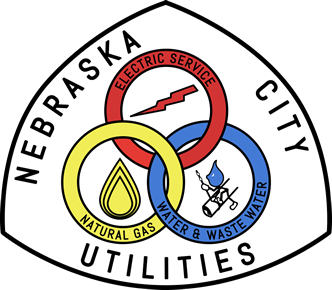Outside your home
- Lawn watering uses a lot of water. Water your lawn only when it needs it. An easy way to tell if your lawn needs water is to simply walk across the grass. If you leave footprints, your lawn may be thirsty! Generally, lawns only need an inch or so of water per week during the summer months. Water your lawn wisely by:
- Making the most of your watering by watering in the early morning. As much as 30 percent of water can be lost to evaporation by watering during midday.
- Planning for fewer, deep-soaking waterings to encourage deep root growth and stronger turf.
Inside your home
- Run dishwashers and clothes washers only when they are full. If you have a water-saver cycle, use it.
- Adjust the water level of your clothes washer so it matches your load size.
- Regularly check your toilet, faucets, and pipes for leaks.
- Check your water meter before and after a one-hour period when no water is being used. If the meter changes at all, you probably have a leak.
- Consider water and energy-efficient appliances. Products and services that have earned the WaterSense label have been certified to be at least 20 percent more efficient without sacrificing performance. The USEPA reports that EPA-certified Energy Star washing machines may use 35% less water per load. Water-saving showerheads, toilets and faucet aerators can also help cut your water usage.
- Insulate exposed water pipes with pre-slit foam insulation. You’ll enjoy hot water faster and avoid wasting water while it heats up.
- Turn off the tap while brushing your teeth or washing dishes in the sink.
Bathroom
* Replace your showerhead with a water-efficient showerhead, doing so is one of the most effective ways to so save on your water consumption.
* Get in the shower as soon as the water becomes warm enough.
* Take short showers.
* Reduce the level of water used in a bathtub by half, or better yet, take a short shower.
* Turn off the water while you are shaving. Fill the sink with an inch of hot water instead of letting the water run continuously.
* Replace your old toilet with a high-efficiency toilet that uses 1.3 gallons per flush.
* To check your toilets for leaks, simply take the top off of your toilet tank and add a few drops of food coloring into the tank. DO NOT flush the toilet wait approx. 5 min and check to see if the coloring appears in the bowl of the toilet, if so you have a leak. These type of leaks can usually be fixed by replacing the flapper or rubber washer.
*Leaky faucets can also be a huge culprit of water loss.
* Don’t waste water when brushing your teeth or washing your hands. Shut off the water until it’s time to rinse.
Kitchen
* Run the dishwasher only when full. This practice will save water, energy, detergent, and money. If your machine has a quick wash or light duty setting, use it!
* Installing a faucet aerators, can cut consumption costs.
* Scrape your dishes instead of rinsing and allowing your dishwasher will take care of the rest.
* Soak pans rather than scrubbing them with the water running.
Laundry Room
* Wash only full loads and use the lowest water level setting on the washing machine for light or partial loads whenever possible.
* Use cold water as often as possible to save energy and conserve hot water for uses that cold water cannot serve.
Additional tips
* Look for the Water Sense label when installing or replacing plumbing fixtures. They are tested and certified to perform as well or better than their less efficient counterparts and on average are 20 percent more water efficient.
* Don’t ignore leaky faucets; they are often easy and inexpensive to repair. Turn off the valve under the sink until you get around to repairing the leak. A slow drip can waste as much as 170 gallons of water each day and will add to your water bill.
* Know where your master water shut-off valve is in case a pipe bursts. Insulate hot water pipes. You won’t waste water waiting for it to get hot, and you will save energy.
